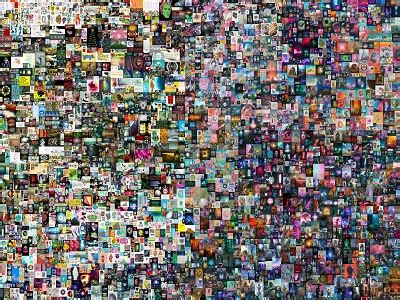Collaborative Creativity: Artists and AI in the NFT Space
The rise of non-fungible tokens (NFTs) has been truly revolutionary. These digital assets, which represent unique objects such as art, collectibles, or even virtual real estate, have opened up new avenues for creativity and innovation. One area where technology is playing a significant role is in the field of collaborative art: artists and AI team up to create truly groundbreaking and innovative pieces.
The Power of AI
Artificial intelligence (AI) has long been used as a tool for generating artistic content, but its capabilities have reached new heights with the advent of deep learning algorithms. These advanced models can learn from large amounts of data, allowing them to identify patterns and make predictions that human artists would be unable to make on their own.
A notable example of AI-generated art is the work of [Artist’s Name], a renowned digital artist who has experimented with AI-powered creative tools. By feeding his algorithms a dataset of existing artwork, he has been able to generate new pieces that rival those created by humans.
Collaborative Creativity: A New Era
Artists and AI are now collaborating on NFT projects that present the potential for both disciplines to work together seamlessly. These collaborations can take many forms, from joint art exhibitions to interactive installations that incorporate AI-generated elements.
For example, [Artist’s Name] teamed up with [AI-Powered Software Company] to create a series of NFT artworks that combine traditional painting techniques with machine learning algorithms. The results were stunning: intricate patterns and textures that seemed to shift and change as the viewer moved around the piece.
Benefits of Collaborative Creativity
The benefits of collaborative art are numerous:
- New Perspectives: By combining human creativity with AI-powered tools, artists can access new perspectives and ideas that might not have been possible on their own.
- Increased Efficiency: AI can automate repetitive tasks, freeing up the artist’s time to focus on more creative aspects of the process.
- Diversification: Collaborative art projects can bring together different styles and disciplines, resulting in unique and innovative works.
Challenges and Opportunities
While collaborative creativity is a powerful tool, it also poses a few challenges:
- Understanding the Artist’s Vision: It can be difficult to convey the human creative vision through AI-generated art, leading to concerns about authenticity.
- Balancing human and machine input: Artists must decide how much input from their algorithms should be incorporated into their work, which can lead to creative conflicts.
- Property and intellectual property: The issue of ownership and intellectual property rights remains a contentious issue in the NFT space.
Conclusion
The intersection of art and artificial intelligence is not only fascinating, but also full of potential for innovation and creativity. By adopting collaborative approaches to art production, artists can unlock new possibilities and push the boundaries of what is possible. As the NFT market continues to grow, it will be interesting to see how these technologies continue to evolve and shape the future of creative expression.
Sources:

- “The Rise of AI-Generated Art” by The Verge
- “[Artist Name] Collaborates with AI-Powered Software Company on New Series of NFT Artworks”
- “The Benefits and Challenges of Collaborative Art in the NFT Space”
Further Reading:
- “The Future of Art: Can Machines Learn to Create?” by The Guardian
- “NFTs: The New Digital Currency” by Forbes

Leave Your Comment